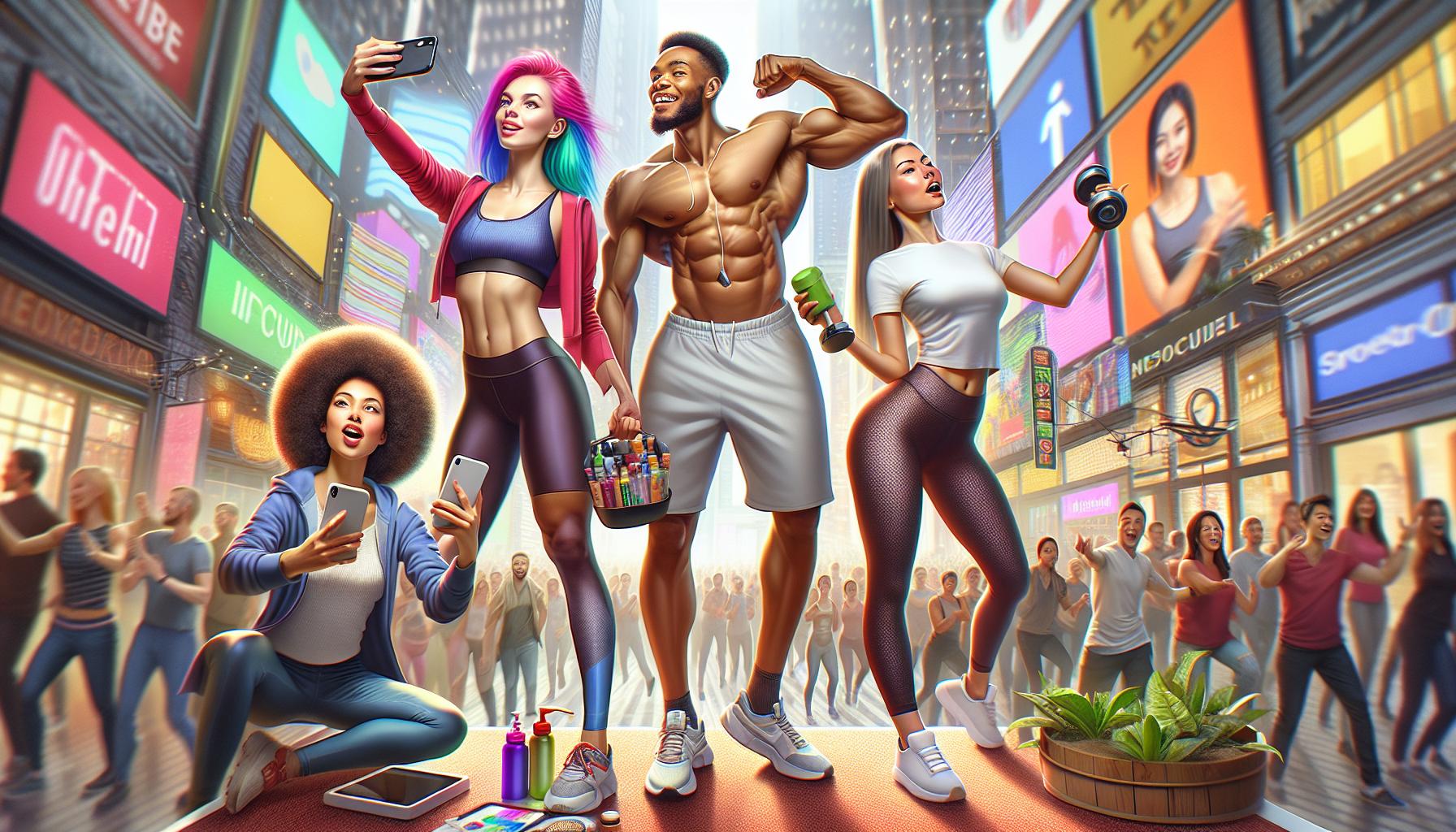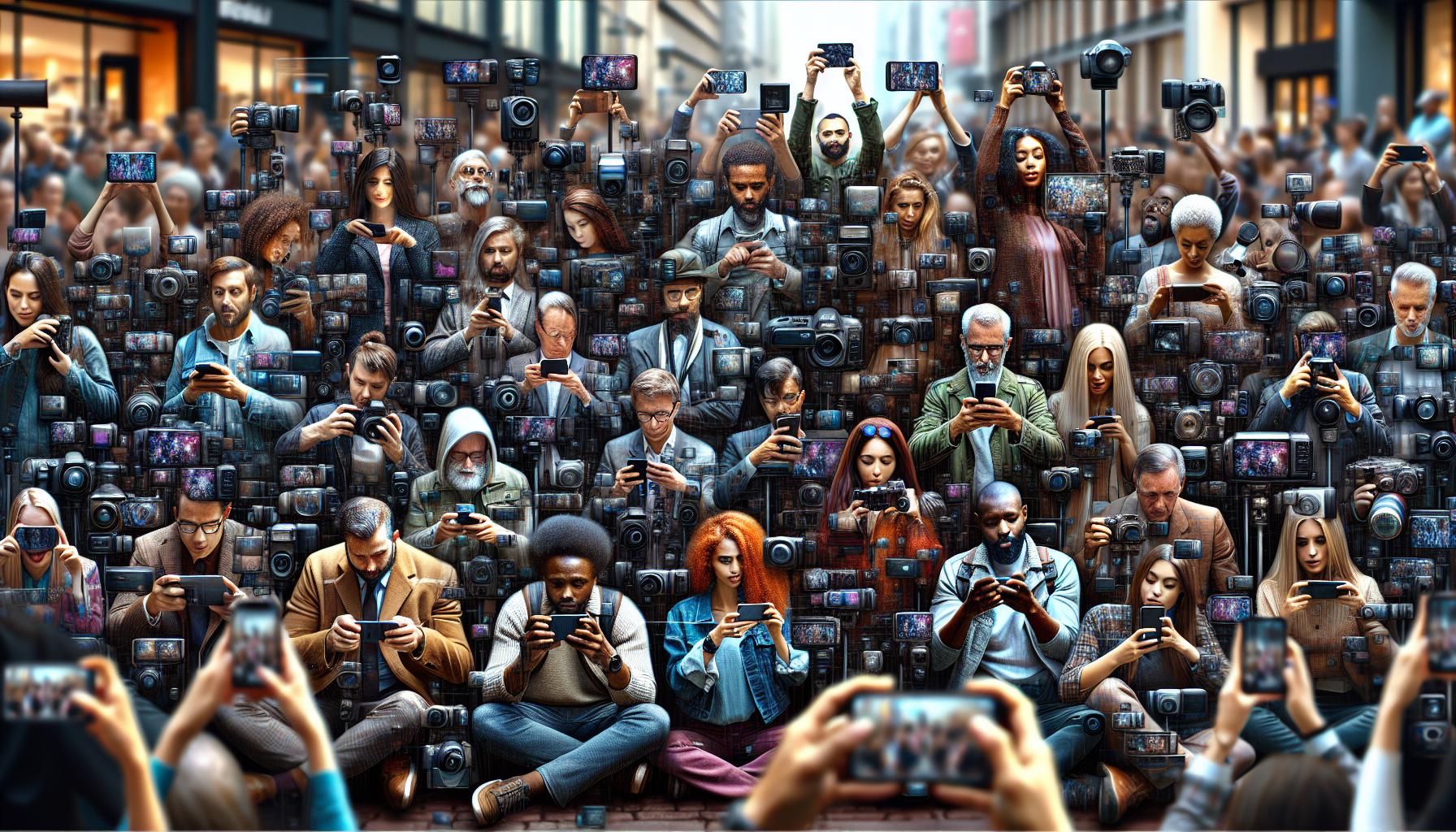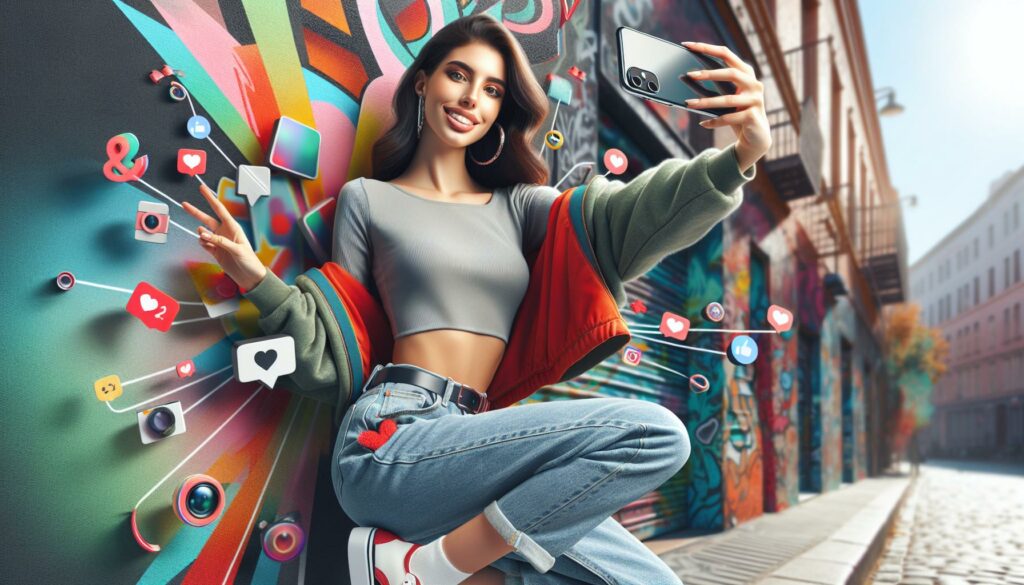In a world where everyone seems to be a self-proclaimed expert, social media influencers have emerged as the modern-day rock stars. With just a smartphone and a sprinkle of charisma, they’ve turned likes and followers into a lucrative career. Gone are the days when traditional advertising ruled the roost; now, it’s all about who can snap the best selfie or create the funniest TikTok dance.
Rise Of Social Media Influencers
Social media influencers emerged as significant figures in modern marketing. In 2023, nearly 75% of brands utilized influencer marketing as a key strategy. These influencers possess large follower bases across platforms, making their endorsement powerful. Content creation shines through visually appealing posts, engaging stories, and relatable narratives.
With platforms like Instagram and TikTok, influencers build authenticity and trust with audiences. Engaging followers directly through comments and live streams fosters a personal connection. As consumer behavior shifts, traditional advertising methods struggle to compete. Brands increasingly favor partnerships with influencers over conventional ad campaigns.
Influencer campaigns yield impressive results, often achieving conversion rates up to 10 times higher than traditional advertising. The power of social proof drives consumer decisions, as people turn to influencers for recommendations. Further, niche influencers continue to grow, catering to specific interests from fashion to fitness.
Strategic collaborations enhance visibility for both influencers and brands. Influencers craft personalized content that resonates with their audiences, making messaging more effective. The industry reflects a growing trend, with influencers generating billions in revenue each year. Consequently, both established brands and startups capitalize on influencer marketing.
Successful influencers continually adapt their strategies, staying relevant amid trends and algorithm changes. In this dynamic landscape, their ability to connect, entertain, and inform ensures their prominence in the marketing world.
Impact On Marketing Strategies

Social media influencers significantly reshape marketing strategies across industries. Their ability to connect with audiences leads to innovative approaches, solidifying their role in brand marketing.
Brand Collaborations
Collaborations between brands and influencers create impactful campaigns. By leveraging influencers’ reach, brands tap into engaged audiences that traditional advertising often misses. Brands gain authenticity through these partnerships, as influencers curate their own content. Moreover, collaborations foster a sense of community, allowing brands to resonate more deeply with their target markets. Successful campaigns often involve comprehensive strategies, aligning brand objectives with influencer content styles. As a result, both parties benefit from increased visibility and engagement metrics. Brands that invest in these collaborations see a notable increase in consumer trust and loyalty. Influencer partnerships demonstrate a keen understanding of current market dynamics.
Affiliate Marketing
Affiliate marketing thrives within influencer marketing strategies. Influencers promote products through unique links, earning commissions on sales generated through their recommendations. This model incentivizes influencers to create authentic and persuasive content. Followers often trust influencers’ recommendations, which translates to higher conversion rates. In 2023, affiliate marketing saw significant growth, with conversion rates reaching up to 10 times higher than traditional methods. Successful influencers craft compelling narratives around products, showcasing their benefits in relatable contexts. Integration of affiliate links in social media posts enhances product visibility without overtly pushing sales. Brands leverage this approach to access niche markets effectively. Overall, affiliate marketing empowers influencers while driving substantial revenue for brands.
Influencer Types And Niches

Influencers come in various types that cater to distinct audiences and interests. Understanding these categories helps brands effectively engage in influencer marketing.
Macro Influencers
Macro influencers typically possess large followings, ranging from 100,000 to several million followers. Brands often choose these influencers for broad reach and heightened visibility. Their substantial follower count provides social proof, enhancing brand endorsements. These influencers establish partnerships with major brands, driving significant campaigns. Campaigns led by macro influencers can generate high engagement, contributing to brand recognition. With the ability to create visually appealing content, they maintain a strong online presence. Brands leveraging macro influencers benefit from increased traffic and potential sales conversions.
Micro Influencers
Micro influencers have follower counts between 1,000 and 100,000. They often focus on niche markets, fostering deeper connections with their audiences. This smaller following leads to higher engagement rates, as followers tend to view them as relatable figures. Brands frequently collaborate with micro influencers for targeted marketing campaigns that resonate with specific communities. With authentic content and genuine interactions, these influencers cultivate trust among their followers. Additionally, micro influencers often offer cost-effective partnerships, making them attractive for brands looking to maximize their budgets. Many brands find that collaborating with micro influencers enhances their presence within niche segments effectively.
Social Media Platforms Driving Growth

Several platforms play a crucial role in the advancement of social media influencers. Notably, influencers leverage these networks to amplify their reach and enhance brand collaborations.
Instagram serves as a primary platform for influencers to showcase their visual storytelling. High-quality images and engaging stories forge authentic connections with audiences. Data indicates that 68% of Instagram users discover new brands on the platform. Brands gravitate towards influencers for marketing campaigns, benefitting from Instagram’s shopping features. Posts combining attractive visuals and product tags lead to effective conversions, often driving traffic directly to brand websites. The platform’s algorithm prioritizes content that generates high engagement, enhancing visibility for influencers. Macro and micro influencers thrive here, adapting their content to resonate with diverse audiences and foster engagement.
TikTok
TikTok stands out as an innovative environment for influencer marketing. Short, creative videos capture attention and often go viral, rapidly increasing an influencer’s following. Data shows that over half of TikTok users enjoy discovering new products on the platform. Brands tap into this trend by collaborating with influencers, ensuring relatable and entertaining content engages potential customers. The application’s algorithm promotes unique and engaging videos, facilitating organic reach. Influencers utilizing trends and challenges enhance their appeal, creating a sense of community around specific content. Micro influencers excel on TikTok, often establishing deeper connections with niche audiences, making them valuable partners for targeted campaigns.
Challenges Faced By Influencers
Influencers face several challenges despite their growing prominence in marketing. Navigating these obstacles requires constant adaptation to maintain their careers.
Authenticity Issues
Authenticity ranks high among the challenges influencers encounter. Followers expect genuine content, leading influencers to balance brand partnerships with personal narratives. Many consumers can detect insincerity, which undermines trust. According to a 2023 survey, 86% of consumers prefer to engage with influencers who demonstrate authenticity in their content. Micro influencers, focusing on niche audiences, often achieve higher engagement levels due to their relatable stories. This need for authenticity compels influencers to curate their online personas carefully, ensuring they resonate with their audiences while promoting products.
Regulatory Compliance
Regulatory compliance poses significant challenges for influencers in 2023. Adhering to guidelines set by agencies, such as the Federal Trade Commission (FTC), is essential for maintaining credibility. Regulations require influencers to disclose paid partnerships, helping consumers identify sponsored content. Non-compliance can lead to legal ramifications and damage reputations. A recent study found that 72% of influencers struggle with understanding and implementing these rules. As regulations evolve, influencers must stay informed about compliance requirements to protect themselves and their brands while navigating this complex landscape.
The rise of social media influencers marks a significant shift in marketing dynamics. Their ability to connect authentically with audiences has transformed how brands approach advertising. As influencers continue to adapt to changing consumer preferences and platform algorithms, their impact on brand visibility and engagement will only grow.
Brands that embrace influencer partnerships can tap into niche markets and foster genuine connections with consumers. This evolution in marketing not only enhances brand loyalty but also drives substantial revenue. The future of marketing will likely hinge on the innovative strategies of influencers as they navigate challenges and opportunities in this ever-changing landscape.



